Network News
In this issue
Features
Principles for Building a Healthy New Home
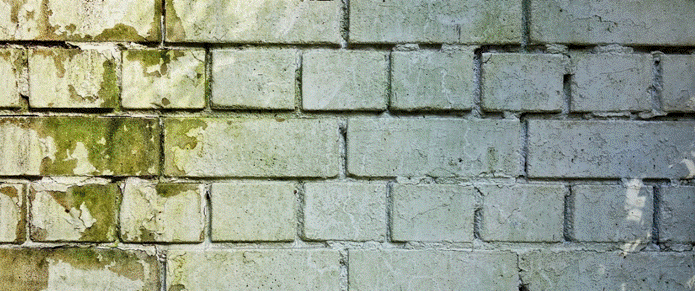
-Mikala Dind
This 4-part series provides practical information to help you build a healthy home.
- FEBRUARY: Design #1: Location, orientation, foundations and insulation
- APRIL: Design #2: Water management – drainage, eaves, gutters and roofs
- JUNE: Management #1: Humidity, ventilation, dust and mould
- AUGUST: Management #2: Internal air quality
Introduction
As a building biologist, I get people asking me how to build a healthy home. Unfortunately there is no quick answer to this question. As I often say, you can take the best designed house and, through poor management, end up with a sick home. Likewise, sometimes you can manage a poorly designed house well enough for it to be considered a healthy home (within reason – there are some design flaws you want to steer clear of at any cost).
In this 4-part series I will discuss some of the basic principles of both design and management that can make the difference between your new home being the dream you have envisaged, or it becoming a nightmare.
Unfortunately sometimes it is a matter of balancing what can seem like opposing principles. There is no one “right way” to do things. For instance, while ventilation is essential, if the air you’re ventilating with is polluted (eg if you live on a main road), then using an air purifier is just as important as the ventilation.
If you want a great resource that covers all of these items (and way more), I highly recommend Healthy Home, Healthy Family by Nicole Biljsma (who founded the Australian College of Environmental Studies, where I trained as a building biologist).

Nicole Bijlsma – Healthy Home Healthy Family
Shall we get started?
Design #1: Location, orientation, foundations and insulation
Location
While “location, location, location” might be the catch cry for real estate agents because it indicates easy access to shops/public transport/schools, has views, or fits a certain lifestyle (eg country/inner city) etc, there are other questions which need to be addressed in respect of your home’s location.
For instance, while living near a main road can give easy access to surrounding areas, it will also bring air pollution (eg diesel particulates) that you may need to filter out from your internal air space. Nearby industry can also produce air pollution (eg silica from cement recycling, dust, soot, noxious gases). Ideally it is good to be 500m from main roads, 2km from light industry and 8kms from airports.
Heavy industry (including mining) can generate air particulates that travel long distances (eg coal dust can travel 10kms from coal piles). Thus, it is a very good idea to ascertain where the predominant breezes come from, and research if any industry is in that up-wind direction. If needed, a good air purifier (that has a HEPA filter, a carbon pre-filter, and does not generate any ozone) will remove particulates from the internal air of your home.
Similarly, being near a golf course, turf farm, park or agricultural area may mean that herbicides might drift into your property (and potentially your breathing space). A distance of 2km will reduce your exposure to these toxins.
If you have allergies (eg hayfever), look not only at the vegetation around the house but also the surrounding areas (particularly in the direction of predominant breezes).
Orientation
The way a home is oriented (north, south etc) will influence many things including warmth, cost of heating/cooling, condensation etc. I am not an architect, so will only touch briefly on some of these issues. However, a fabulous resource for passive design is Your Home, a free guide to environmentally sustainable homes in Australia.

Image: Your Home
In order to gain maximum benefit from the sun’s light and heat, a home should generally face north (unless it is in the tropics, where facing south will keep the house cooler). Having larger windows/glass sliding doors on the northern side will also take advantage of the solar input to your home. (Don’t forget, glass not only allows heat in, but also lets it escape once the sun goes down. Thus curtains or blinds will reduce heat loss during the night.)
Given that there is usually no direct sunlight/heat entering from the south, fewer windows on this side will mean less heat loss (which is particularly important in winter, while in summer use open windows to remove warm air). Similarly, fewer windows on the western side will mean less heat gain from the hot afternoon sun.
Pay attention to the surrounding landscape (ie the 5kms around the site). Are there hills/trees to the west that mean that the sun will “set” early? Get a shadow map generated for your home which will give you a good idea of the available sunlight throughout the year. You can also go to SunEarthTools.com to generate a map showing the sun’s summer and winter path over the home.
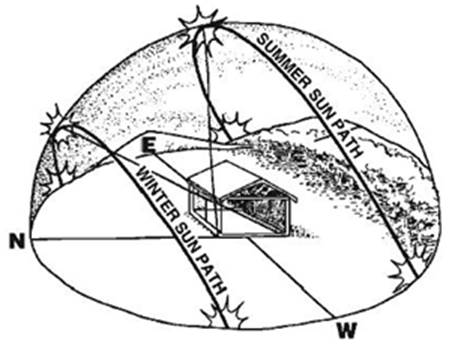
I once did an audit for a family who had symptoms of mould illness. When I got to their rental “home” I realised that the owners had simply built a granny flat of sorts below their balcony and pool – on the southern side of their house. In theory it sounds like a good use of space (especially if someone is willing to rent it from you). However, the downside is that the rear half of the flat was either built directly into the sandstone the house was built on, or backed up closely to the damp, dank sandstone beneath the pool. Effectively the flat was a damp cave with a few sliding doors at the front. No cross ventilation or direct sunlight, and constant high humidity (as moisture from the sandstone migrated through the walls), meant this was mould heaven (despite them using a dehumidifier every day). As you can imagine, it was also bone chillingly cold in winter. My advice to them? Move out (though my report did set out a plan B in case this was not possible, as they had recently re-signed the lease). Fortunately the owners let them break their lease. However, I suspect someone else is now suffering from such a poorly designed living space.
Foundations
Cement slab
If a house is built on a cement slab, then the layout of the surrounding land becomes an important issue to address. That is, if the cement slab is on the top of a hill/mound, it won’t have as many drainage issues to avoid (ie from water seeking to ingress into the home from surrounding soil). However, if the site is flat or has one or more sides higher than the slab, then it becomes very important to get the external drainage right. I always recommend to my clients that they over engineer their drainage so they don’t have to spend multiple times that extra cost to remediate a damp wall/room/home (with all the health consequences that can come from living in a damp house).
It is not recommended to have dirt be in contact with the walls or roof of the home as this increases the risk of things going wrong and water ingressing into the home (bringing with it great remediation expense). Instead, the cement slab should be visible at the base of the cladding to prevent water ingress and allow for easy termite inspection. When gardens are planted right up against cement slabs, they create greater humidity within the home through moisture wicking through the cement.
Piers/stumps
Even if a home is raised on, say, brick piers, the layout of the site (whether it’s flat or has one or more higher sides) is still important as it will determine whether water coming towards the house from the surrounding ground can get away fast enough, or whether it will pool under part (or all) of the house.
Homes built close to the water (ie on sand), even if on piers, will generally have some form of impact from the constant presence of water below the home and this will require extra thought given to drainage (and may involve installation of a sump pump).
I have done several audits where the house was on piers on level ground. In every case water pooled, for whatever reason, under at least one or more rooms. Inevitably those rooms were impacted by mould due to the increased internal humidity. Further, any mould that grows below a room (eg on the dirt, piers or underside of the subflooring) will send noxious gases into the room(s) above, either through the joins in the flooring, or wall cavities (especially where there are holes in the walls, such as for power points).
Insulation
I only have one thing to say about insulation – Please don’t skimp on it as it is an investment that will repay itself over and over (in cheaper heating and cooling). Ok, there is an aside I’ll make – I have observed that insulation made from recycled PET (plastic bottles) does not get impacted by water the way glasswool does (which loses its loft and therefore its insulating capability) or mould (the way cellulose based insulation does).
Now that I’m on a roll about insulation, I would also add that straw bale walls, while they may have great insulating capacity, have the downside of harbouring mould growth (and thus being a source of toxic gases) if water gets inside the bale.
In the next article I will discuss drainage, gutters, eaves and roofs.
Today’s take-away tip – Shoes
Leave shoes at the front door (or in a foyer at the entrance). This will go a long way to reduce the amount of dust and debris (which can include pesticides and fecal matter) that is tracked into your home.
The Dragonflies of Narara

-Text and photos by Richard Yank
Approximately 330 species of dragonflies (including damselflies) are found in Australia, mainly in the eastern and northern parts of the country. This group of primitive insects, known from as far back as the Jurassic Period (195-135 million years ago), contains many species endemic to Australia. A number of these have quite limited geographical ranges and remain poorly known.
While no rare species are known to occur at Narara Ecovillage, a nice variety of the more common Australian dragonflies can be observed on the property, thanks in large measure to the presence of the dam and Narara Creek, as water is an essential element in the life cycle of these fascinating insects. While we are all familiar with the sight of adult dragonflies that fly through our gardens feeding on a variety of insects, the larval stages of their life prior to their emergence are spent underwater and typically last significantly longer (as much as several years in the case of larger species) than their time as adults.
Following are photos of several species found on the property:
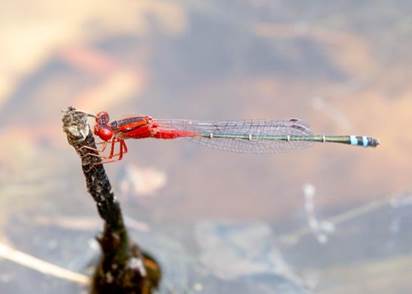
The Red & Blue Damsel
The Red & Blue Damsel inhabits slow streams and still waters, the male being much more colourful than the female. This male was photographed on the Narara dam.
Common Bluetail
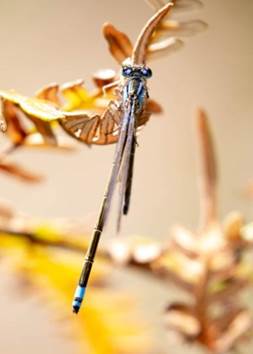
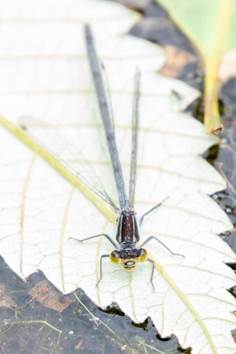
Another damselfly commonly found around bodies of sluggish water, including the Narara dam, is the Common Bluetail. Both male and female are shown here, the male once again sporting the brighter colours.
Common Flatwing
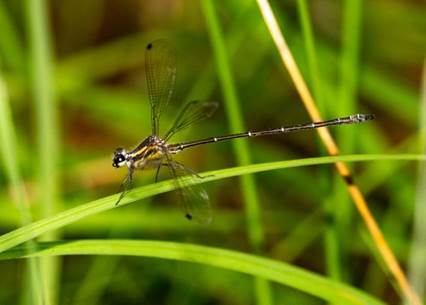
Flatwings are a family of damselflies that spread rather than fold their wings when at rest. These are usually found along rivers and streams. The Common Flatwing, the most widespread member of this family in eastern Australia, can often be seen along Narara Creek perched on low vegetation or sitting in a sunny spot on one of the Strickland Forest tracks.
Australian Emerald
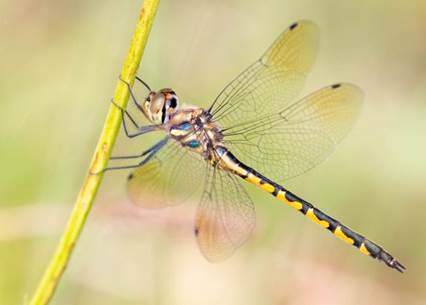
The most abundant dragonfly species observed in Narara EcoVillage is the Australian Emerald. Adults are known vagrants and are encountered in a wide variety of habitats. They are most often seen hunting on the wing over fields and gardens or patrolling over still water, including the Narara Ecovillage dam.
Australian Emperor
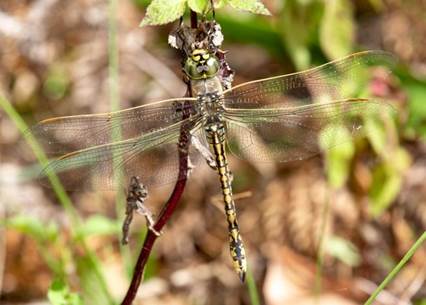
Another vagrant dragonfly, larger and more yellowish in colour than the previous species, is the Australian Emperor. Its habits are very similar to those of the Australian Emerald but, while still common, it is present in much lower numbers.
Fiery Skimmer

The brightly coloured male Fiery Skimmer is common near lakes, ponds and shallow streams throughout eastern Australia. This one was photographed along the edge of the ecovillage dam.
Blue-spotted Hawker
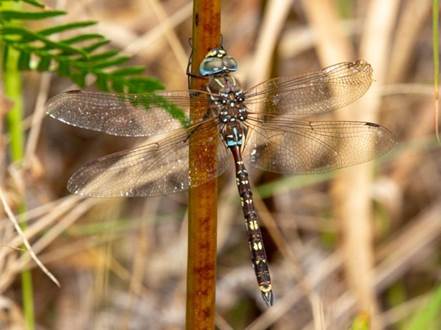
The Blue-spotted Hawker, the only member of its genus found in Australia, is a fairly large and colourful dragonfly that is common in the area. It mainly inhabits still waters. However, as the adults are vagrants, they can be encountered in a variety of open areas such as forest clearings, weedy fields, and gardens.
Eastern Evening Darner
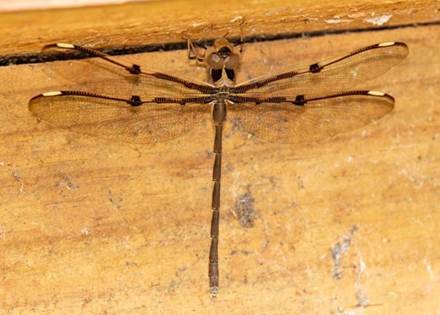
While not especially rare, the Eastern Evening Darner goes largely unnoticed due to the somewhat unusual habits of this family of relatively large dragonflies. These dragonflies are crepuscular (twilight), taking flight for a brief period at dusk to feed, and hanging inconspicuously under vegetation or other structure during daylight hours. This individual was photographed hanging from a garden wall within the village.
Graphic Flutterer
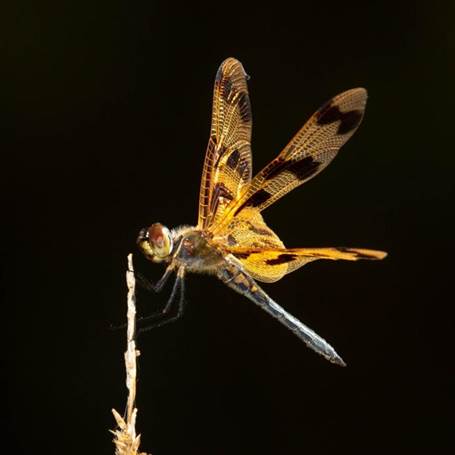
The Graphic Flutterer, a small and colourful dragonfly of lagoons, lakes and ponds is widespread in Australia. This male was photographed on the edge of the ecovillage dam.
Common Glider
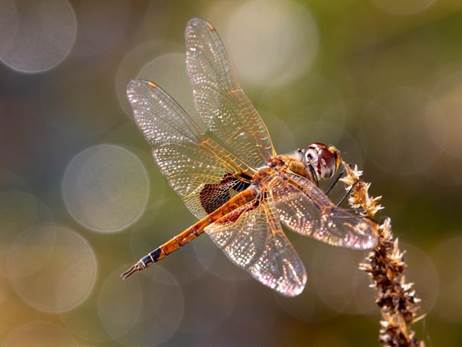
Also inhabiting a wide range of still waters, including Narara dam, is the Common Glider which is found throughout Australia. It is most often seen on the wing.
Village News
Possum’s Progress
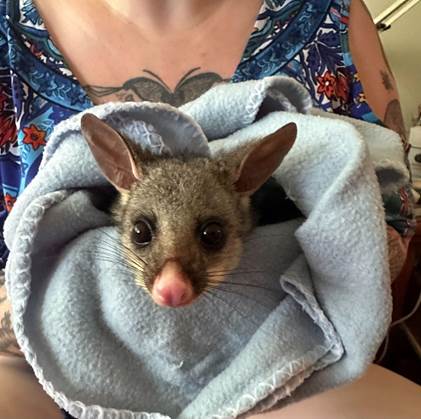
-Karl Schurr
On a balmy evening in late August, Annie and I were walking home from Narara station to our home at Narara Ecovillage. As we approached Research Rd, we heard a commotion in a nearby tree and a cat below. Cats outside at night are never a good idea so I scared it off. Our fears of a cat attack were quickly confirmed as we spotted a small possum on the footpath. It was probably terrified and too small to run, even though it appeared not to have any injuries.
We bundled the furry animal up in a jacket and it seemed to settle. When we arrived home, we found a box, a jumper and a hot water bottle. We immediately called the local wildlife carer group Wildlife Arc – arc@wildlife-arc.org.au. Wildlife carer Sam arrived in about 20 minutes and asked us all about our found possum and then surprisingly placed him in her bosom as, ”It’s the correct temperature.”
Sam later sent us a report on his progress: “I found the right house straight away and knocked and got permission to sit on their driveway under the big tree tonight to try to reunite the baby with its mother. However, I have taken Bub home and assessed him and he has two puncture wounds, one on each shoulder. I have warmed him up, cleaned his wounds, put topical antibiotics on them and started him on oral antibiotics too. He will need to stay in care to finish his course on meds and it won’t be likely to reunite him with his mother after that long unfortunately. You guys saved his life tonight so thank you. If you can think of a name for him I would love some help”. We christened him ‘JIT’ (Just in Time).
Sam later attempted to reunite him with his mother which unfortunately proved not to be possible. Jit was given a course of antibiotics and left with another carer to fully recover. Eventually, he was returned to Sam for her to care for in her aviary until release.
So is there a moral to this story? Walking offers all sorts of unexpected possibilities, not to mention the health benefits. And importantly, I would never have seen the exquisite tiny hands of this little possum if we hadn’t rescued him. May he range freely and not eat my vegetables.
NEV Power Smart Grid Project – Lessons Learnt Report No. 2

-Chris Wenban
The Australian Renewable Energy Agency (ARENA) has published the 2nd report from Narara Ecovillage Power (NEV Power), which answers some key questions posed by ARENA around challenges, costs and issues relating to the Ecovillage Smart Grid Project.
The report provides data gathered by NEV Power on energy generation, consumption and house design impacts, and includes findings on the delivery and operation of the Smart Grid, as well as its community and utility impact.
The findings show that current regulatory, utility and financial models are not yet aligned with a mid-sized embedded network acting as a high voltage commercial customer, and advises the use of the battery to generate further revenue as well as national action to support communities undertaking similar projects.
To download and read both reports 1 and 2 from the ARENA website, please click here.

Update: Joining Narara Ecovillage
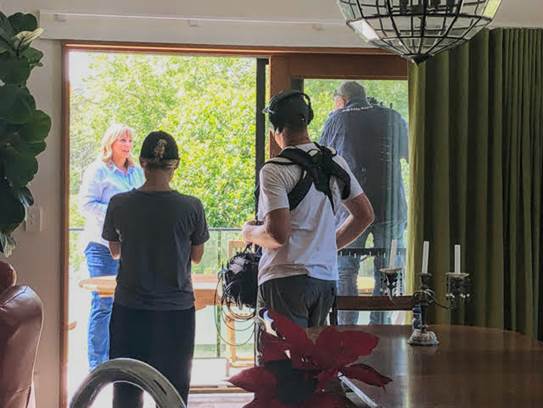
Better Homes & Gardens visit to Narara Ecovillage and airs on Seven, Friday 17 March 2023
-Lyndall Parris
I always smile when I remember our earlier Project Director, John Talbott, talking about the Marketing and Sales of our lots here at Narara Ecovillage. He said: “Tell people we are selling community, and we’ll throw in a lot”.
Our project is hugely different from the norm where people do not engage with a place until after the infrastructure is complete, titles are issued and there is a neat layout of blocks for sale.
At the ecovillage by that time, we have got to know our future neighbours, enjoyed this beautiful property, contributed to the success of the project and made progress payments so that our development doesn’t incur the stress and higher costs of a public financial institution. JT’s adage is so right!
As we enter the final stage of our lot sales, we are delighted with some collaborative living arrangements that are developing and evolving. For example: a couple, a young man, and two women have combined to purchase a lot. They met through our Collaborative Living Network (CLaN) which meets on Zoom each week. They decided that they could be good neighbours and have liaised to meet their individual cost and footprint requirements.
If you are interested, please contact me: Lyndall@nararaecovillage.com or 0419 279 711 anytime, or email: info@nararaecovillage.com and we can get you up to speed on the Journey to Joining Narara Ecovillage.
How to impress the Sydney grandchildren
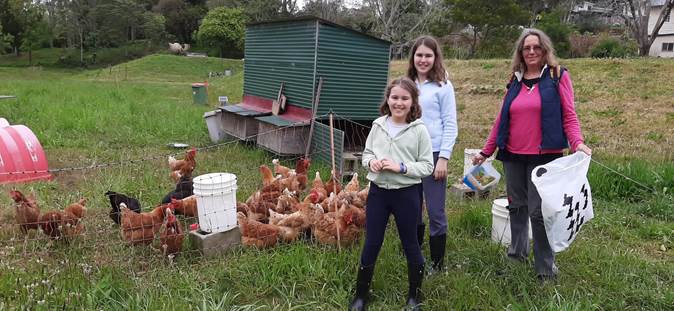
-Jazz Mozzi
A long-awaited visit, Jazz’s daughter and 12 and 9-year-old grandchildren have an enjoyable day exploring the delights of the village. They live in an apartment with a cat.
- 10am – arrive at Granny’s ecovillage and fetch her out of the office to go to the coffee cart. Hot chocolate, choc chip cookies and cheese toasties.
- Pick some turkey rhubarb (considered a weed) for the chooks.
- Home to unpack the new wellies, umbrellas and bags.
- Run around the house in the rain a few times, just because they can.
- Put on the wellies (so happy it’s raining!) and venture out to find the chooks. Very excited to see the warm welcome from many chooks all clamouring for some greens and scraps.
- Home again, run around the house some more.
- Drive to a local restaurant for lunch to discover more creatures to feed. The koi fish in the ponds with gaping mouths waiting for fish food. A Treasure Hunt to locate various statues around the gardens and Mum lets them choose a crystal each from the mini shop. The menu is all vegetarian and vegan, happy family with all 3 of them being vegetarian.
- Home to get the umbrellas and walk up Syncarpia Hill and around to the ‘not’ Hobbit House to see the ‘not’ round hobbit house door and be impressed by the magic of it all.
- Back down to Paperbark House to have a tour with Anne, the manager. My daughter remembers the creepy dark passages and gloomy storerooms where I stored my stuff for years. Such a transformation into comfortable guest accommodation.
- Into the Village Pantry, impressed again, it looks like a real shop!
- Back via the Members Lounge to choose a game from the large communal collection to take home.
- Put on dry socks, have a cuppa and play Scattergories.
- Wraps for dinner with lettuce from Granny’s Garden.
- Back to Sydney and the 12-year-old barely touched her phone all day except to send photos to her friends of herself with the chooks.
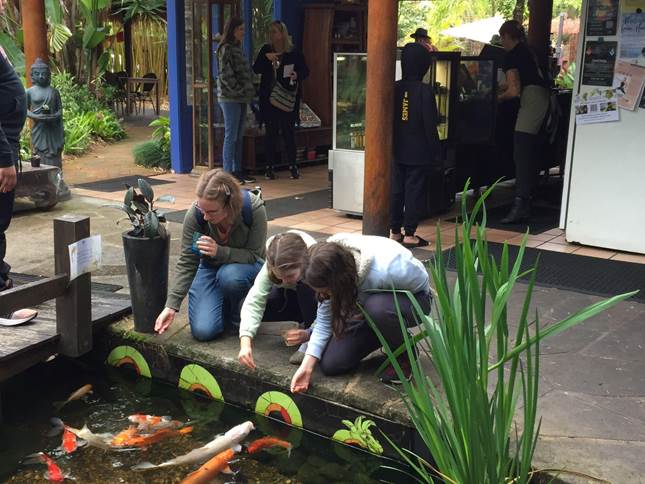
We have so much to offer, what a village we are creating together!
John Seed and Deep Ecology in the village and around the country

-Suzie Brown
Image from www.deepecology.org.au
Deep Ecology recognizes the intrinsic worth of all living beings and regards humans as but one of many strands in the tapestry of life. We are lucky to have world-renowned deep ecology teacher and rainforest activist John Seed as a resident of Narara Ecovillage.
“Ever since my epiphany in the early 80’s I’ve never wavered from my conviction that the world needs to understand that the illusion of separation between humans and the rest of the natural world is the root of the environmental crisis and our slide to oblivion...
“And that the ceremonies and rituals that Joanna Macy and I created (synchronous with what all indigenous peoples, including of course our ancestors, have practiced for hundreds of thousands of years), are a simple and reliable way out of the trap. John Seed
About John
At Narara Ecovillage, we are lucky to have as a resident of the village, John Seed, a world-renowned deep ecology teacher and rainforest activist. With Joanna Macy, Pat Fleming and Professor Arne Naess, John wrote the book “Thinking Like a Mountain – Towards a Council of All Beings” which has been translated into 12 languages.
John has been offering deep ecology workshops for decades, and interest in his work has accelerated in recent years – he is on the road constantly, with his workshops filling rapidly.
John’s recent interview with Tyson Yunkaporta garnered much interest.
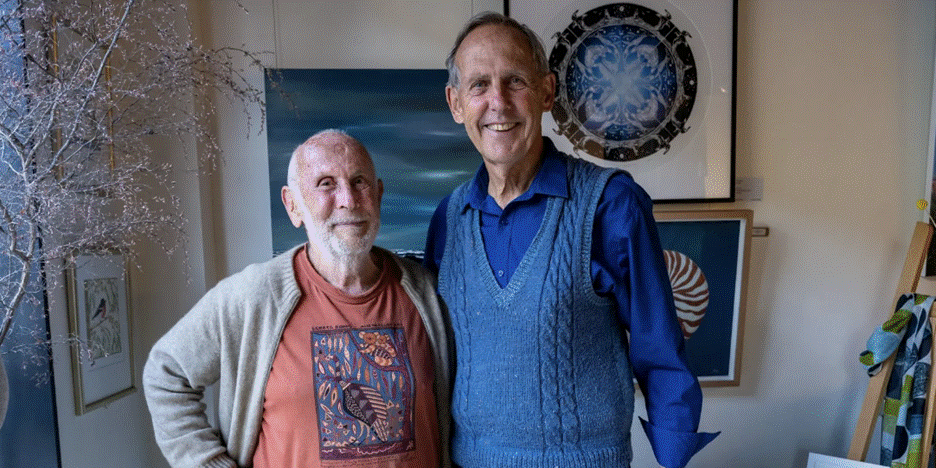
And an event in Hobart just this month featured an hour-long conversation between John Seed and Bob Brown about how to address the ecological crisis we are facing.
Members of Narara Ecovillage are rallying to support more Deep Ecology workshops at the village. A series of working bees is being conducted to convert an old horticultural structure on the land into a deep ecology and workshop space to keep 40 or 50 people under cover, yet still connected to the land.
You can join us for a unique opportunity to experience deep ecology and nature meditation at the Deep Ecology and Nature Meditation workshop at Narara Ecovillage on 11-12 March 2023 with John Seed and Suzie Brown.
About me: Suzie Brown
Also a village resident, I teach Insight (Western Buddhist) Meditation and Mindfulness Based Stress Reduction (MBSR), as well as courses in Climate Resilience and Nature Connection. I have been an environmental activist for over 20 years and was the founder of Australian Parents for Climate Action.
Included in the weekend will be deep ecology activities, meditations in nature, connection to the plants, animals and landscape, bird language and behaviour, animal tracking, bush tucker and edible weeds, and campfire stories & songs. You’ll also get to experience life in the Narara Ecovillage and there will be tours of the village on offer.
We encourage you to book asap as places will fill quickly. And we invite you to share this information with your friends or family who you might like to gift an experience.
Events
Mon Feb 20: Presentation: Ecovillages as Incubators

- When: Monday 20th Feb, 7-8.30pm
- Where: Zoom
- Cost: Free
- More info & Registration: Here
In this event, researchers from the University of Basel will present their global study on ecovillages in different world regions, followed by a presentation by Narara Ecovillage of our projects and how these demonstrate examples of regenerative action and circular economy. Read more …
The aim of this event is to share the initial results of the Ecovillages as Incubators for Sustainability Transitions (EVIST) Project.
Ecovillages are regarded as real laboratories of sustainable change. Ecovillages are communities in which people develop novel forms of social, ecological, economic, and cultural sustainable practices. Ecovillages’ emerging innovations can provide important impulses for the broader society and drive sustainability transitions.
Thu Feb 23: Storytelling at the village
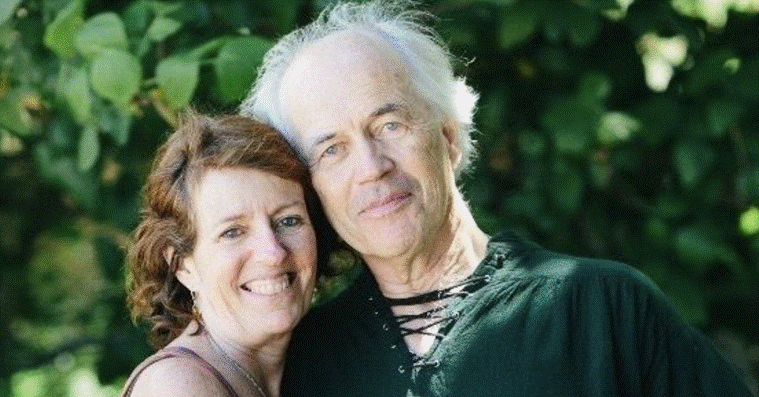
-hosted by Linda Scott
Lindy Mitchell-Nilsson & Ulf Nilsson
- When: Thurs 23 Feb, 7-9pm
- Where: Narara Ecovillage Hall
- Cost: $15 pay at the door or $10 for Narara & NELN members
- More info & Registration: Here
An evening of entertaining storytelling. Following our enjoyment of Long Story Short storytelling at North Gosford prior to covid, we are pleased to launch a monthly storytelling evening at Narara Ecovillage.
Long Story Short’s Lindy Mitchell-Nilsson and Ulf Nilsson will be Guest Storytellers at our opening event.
Sat Feb 25: The Joy of Purpose: Inspiration, stories & tips for connecting to yours
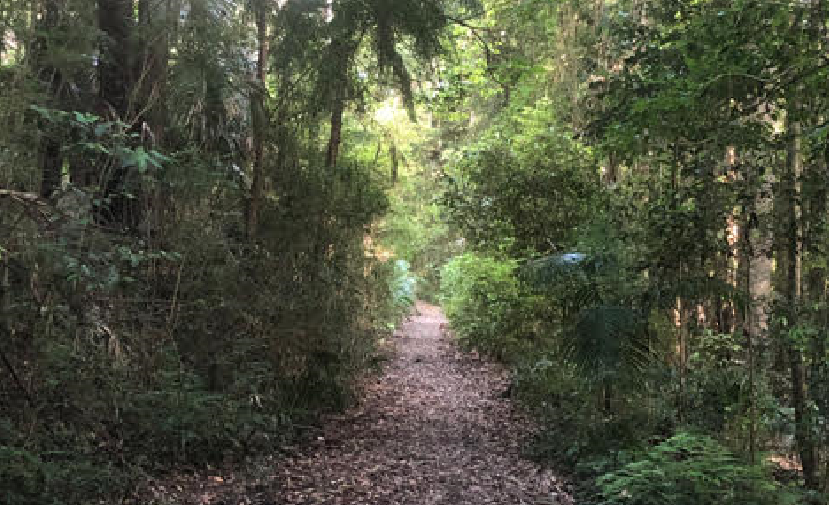
-with Lyndall Parris
- When: Saturday 25 February, 9am – 4pm
- Where: Narara Ecovillage Hall
- Cost: $100 or pay what you can
- More info: Register here
“It’s only when you get people pursuing their dreams, living their truth and feeling good, that we can move society forward.” This workshop aims to help you identify what you are best able to offer your community and the world, to bring bliss and purpose to your life.
It is now over 20 years since the kernel of the idea for Narara Ecovillage was formed in Lyndall’s psyche. The path was rocky, but her sense of purpose has never waivered.
Through sharing the story of her journey to founding the ecovillage, Lyndall offers inspiration for finding your purpose and what it takes to bring it to life.
This workshop aims to help you identify what you are best able to offer your community and the world, to bring bliss and purpose to your life. Lyndall will share how her purpose became clear, offer nuggets that have inspired her along the way, tell stories of failures and triumphs, as well as giving practical tools that have helped her make her dream a reality.
Commendations from the previous workshop:
- I just wanted to say a huge thank you for Saturday. It was EXACTLY what I needed. Have been feeling very stuck and could not figure out why. It has been a huge help and I have some clarity re my next steps. You are an inspiration.
- I liked how careful, thoughtful, informative, brave and joyful Lyndall’s presenting and facilitation styles are, and how encouraging and honest her feedback was.
Sun Feb 26: Narara Ecovillage Open Day Talk & Tour + potluck lunch afterwards
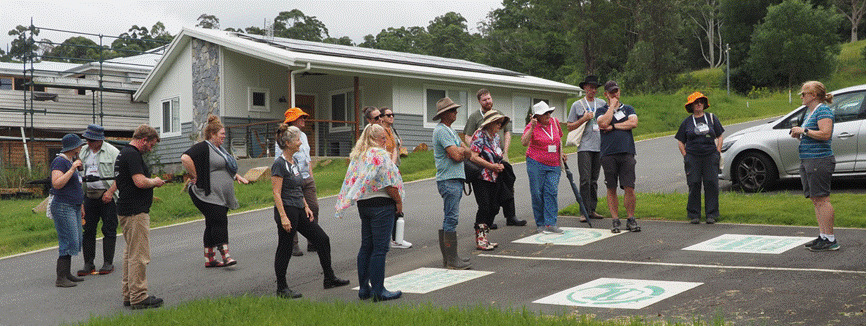
- When: Sun Feb 26, 10.30am – 12.30pm
- Where: Narara Ecovillage Hall
- Cost: $15 includes talk & walking tour around village, kids free!
- More details
- Bookings please
Every month this talk and tour is delivered, with village residents dropping in to greet and guide curious visitors around the village and answer the myriad of questions. Things change constantly as new projects are completed so it’s no wonder that people like coming back over the months and years!
Often the talk and tour may be a taste of a larger event, such as the Ecovillage Experience Weekend or Deep Ecology .. a way of better seeing possibilities for the participants in eco-lifestyles that help regenerate the planet.
- We invite you to bring a picnic to join us for a more informal chat afterwards – young and old welcome; we are an intergenerational and inclusive village!
- This month we will have an afternoon speaker Jackie Pearson at 2pm about Three things that you can do for Nature NOW!
- NB: Narara Ecovillage Open Days are held on either Saturday or Sunday on the last weekend of every month * subject to change – keep an eye on our website calendar & Facebook
Sun Feb 26: Three Things you can do for Nature NOW
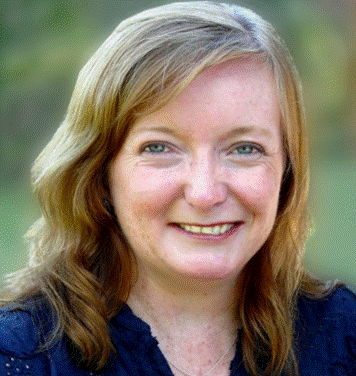
–with Jacquelene Pearson
- When: Sun Feb 26, 2-4pm
- Where: Narara Ecovillage Hall
- Cost: $10
- Register here
Join Jacquelene for a two-hour workshop on what you can do NOW to support nature on the Central Coast and how we, collectively, can be advocates and stewards for our local environment. We will collaborate, improvise, have a good laugh, and go home with an achievable ‘to do’ list.
Jacquelene Pearson is an independent ESG News publisher, poet and public interest journalist – she publishes The Point, focused on local and environmental issues. She was previously a journalist at Central Coast News and won a grant from the Walkley Foundation to launch The Point. In 2020 she made a commitment to dedicate the remainder of her productive years to campaigning for environmental justice, social justice and democracy.
Wed 1 Mar: Make Your Own Rules – Explorations in Governance

-Hosted by Karl Fitzgerald, Director of Grounded.org.au
If you have ever thought of joining an intentional community, or dared to dream of setting one up, this is the event for you.
- When: Wed Mar 1, 6-7.30pm
- Where: online
- Cost: Free
- Register here
How many times have you heard of a community that focused so hard on the set up that they didn’t plan for how people leave? Where a community finally buys the land but then gets bogged down over whether animals are allowed. This event is designed to help you plan through such hurdles with best practices in place.
We are lucky to be joined by three wise heads who bring with them the wisdom of Australia’s intentional community learnings.
Megan James is a founding member of Tuntable Falls (Nimbin), one of Australia’s oldest intentional communities. Peter Cock is also a founding member of Moora Moora, near Healesville (Victoria), formed at a similar time (following the Aquarius Festival 1973). Robin Clayfield is speaking as someone who has lived for 35 years in the legendary Crystal Waters, where 250 people live on 640 acres of idyllic countryside near Maleny (Qld).
Together they will try to answer:
- how best to establish a community across the legal, governance, social cohesion aspects
- the commitment and priorities required to make it happen
- best practices on governance
- how a community ages over time and how to renew/ remain engaged both internally and externally.
The evening will be hosted by Karl Fitzgerald, Director of Grounded.
Grounded is a new NGO established to advocate for better policies to support intentional communities – particularly Community Land Trusts.
We are looking forward to a deep-dive on this essential aspect to life on earth: how best to live together.
Sat Mar 11- Sun 12: Deep Ecology Nature Meditation Weekend

- When: Sat Mar 11- Sun Mar 12, 09.30am – 4.00pm
- Where: Narara Ecovillage
- Cost: $360 + accommodation
- More info: Register here
A two-day workshop retreat with John Seed and Suzie Brown, and guests.
Immerse yourself in the beautiful natural surroundings of the ecovillage as you experience group deep ecology, nature connection and mindfulness activities.
Our busy, urbanised lifestyle tends to take us away from feeling our natural connection to and interdependency with nature. This workshop will reawaken the ancient wisdom we all have within us, that we are part of this living natural system. In remembering this, we have the opportunity to feel whole once more.
The workshop retreat will include:
- deep ecology activities
- meditations in nature
- connection to plants, animals and landscape
- bird language and behaviour
- animal tracking
- bush tucker and edible weeds
- campfire stories & songs
You’ll also get to experience life in the Narara Ecovillage and there will be tours of the village on offer.
Save the date: 18-20 Aug another Deep Ecology retreat is planned
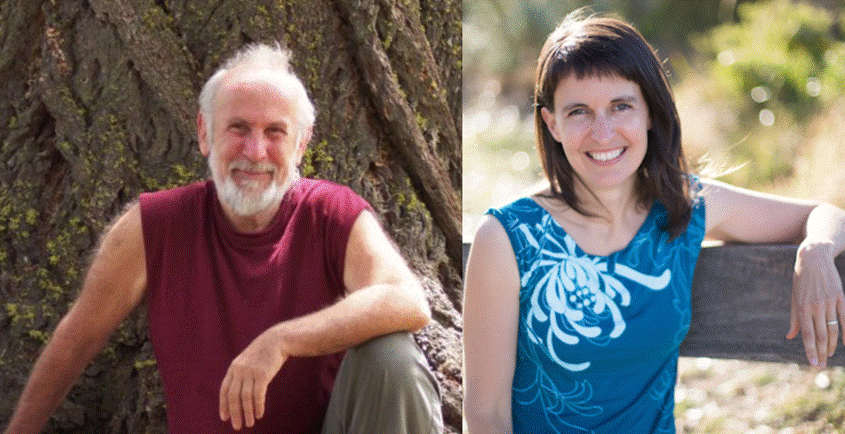
Sat Mar 11- Sun 12: Home energy & electric vehicle show

An event for those reviewing their electric vehicles and energy efficient homes
- When: Sat & Sun 11-12 Mar
- Where: Sydney ICC
- Cost: $35-$60
- More details & program
You may see a number of Narara members, Graham Hunt of DHW, and Dick Clarke and Andy Marlow of Envirotecture at the event in different capacities!
Sun Mar 12: Ecovillage Design Education (EDE) commences – online

The EDE brings together theory and practice, collaborative methodologies and appropriate techniques while building heart connections and community worldwide.
- When: Commences Sun 12 Mar for 4 months
- Where: online
- Cost: $1575 AUD
- More details & program – GEN Australia is reaching out to garner sufficient interest from a range of ecovillages for an antipodean cohort to study together.
A free introductory webinar on Friday 17th February at 05.00am AEDT aims to shed light on crucial points of why and how the EDE can create systemic change. The webinar brings together experienced EDE educators that have been working with the program all over the world in very diverse scenarios. Read more …
As we face multiple global crises, it’s important we educate ourselves & learn tools to help us shift towards a better future!
The EDE links people and projects closely from all over the world and allows through the personal sharings of the participants to get a deeper understanding of the world. It brings together theory and practice, collaborative methodologies and appropriate techniques while building heart connections and community worldwide.
The EDE curriculum was created by a group of cutting-edge educators from the Ecovillage Movement almost 20 years ago, and it is even more relevant to create change today.
FAQs answered here
A personal experience of attending the EDE online in 2021.
Sat Mar 25: Help save a Swifty!
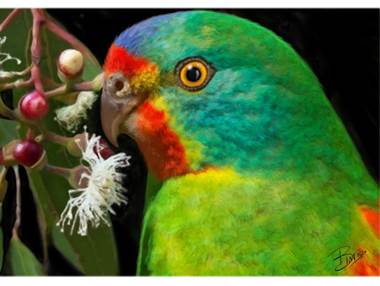
- Where & when: Narara Ecovillage Village Hall, Sat Mar 25, 8.30am – 12 noon
- Register here
- Cost: Free
Join us in this great opportunity to enjoy a practical day supporting nature with experts and like-minded enthusiasts!
- Learn about the beautiful Swift Parrot and how to regenerate habitat.
- Explore the corridor habitat along Narara Creek, where you will help to provide winter food for them as they migrate north.
- Qualified facilitators on site to guide and inform you.
Also Includes
- A delicious morning tea
- A Revegetation Guide and a Swift Parrot Guide from Local Land Services
- The opportunity to find out how Local Land Services could assist you with your property
More details here:
Our aim is to create and maintain a corridor of winter food plants for the critically endangered Swift Parrot with the rehabilitation of threatened Swamp Sclerophyll and Rainforest plant communities. Last time we removed some of the forest of young Privet, using the wonderful Tree Poppers, and planting up to 290 plants, including 80 Swamp Mahogany (Eucalyptus robusta).
Up to 30 places are available for this workshop which is targeted for local landowners who are likely to benefit from the skills and knowledge that we are offering in the workshop, so that they can implement them on their own land so please share with people who would appreciate this
*This event is made possible by grant funding ‘GS01665 Narara Ecovillage Narara Ck Stage 1’ which is supported by Local Land Services through funding from NSW Treasury
More info about the Swift Parrot here
Sun Mar 26: Narara Ecovillage Open Day
- When: Sun Mar 26, 10.30am – 12.30pm
- Where: Narara Ecovillage Hall
- Cost: $15 includes talk & walking tour around village, kids free!
- More details (registration is not yet open for this event)
Sun Mar 26, 1-5pm: Sustainable home tours with Graham Hunt & Ella Wood

- When: Sun Mar 26, 1-5pm (2 separate tours – 1pm & 2.45)
- Where: Narara Ecovillage Hall
- Cost: $25, $20 for NELN & Narara Ecovillage members
- Register here
Join expert sustainable home architects for a guided tour of three Narara Ecovillage homes.
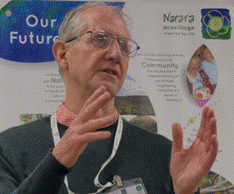
About Graham Hunt
Graham Hunt of DHW Design and co-director Ella Wood have invested enormous energy & expertise into Narara Ecovillage. They bring this event as an extension of the Sustainable House Day on March 19. Graham is organising a visit to three eco-homes in one afternoon as examples of energy efficiency and homeliness.
Graham has over 33 years’ experience as an architect, mostly in the area of environmentally sensitive design. He also has nearly 21 years’ experience as an accredited NatHERS assessor and has completed hundreds of thermal comfort and BASIX® assessments.
Not just a recent recruit to green building concepts, Graham designed and built his first passive solar home in 1983. His design focus is to create stimulating, healthy, resource-efficient living spaces that are holistically conceived whilst also being imbued with a sense of delight.
With a realistic and pragmatic approach, cost-effective design solutions evolve after detailed site evaluation in conjunction with deep consultation with clients. Being highly respected throughout the industry for his expertise in thermal comfort assessment, Graham specialises in helping home owners make their new or renovated homes perform optimally in summer and winter.
Graham is extensively involved in various industry committees. He currently represents the Australian Institute of Architects on the national NatHERS Technical Advisory Committee, NatHERS Stakeholders Consultative Committee, the Your Home Consultative Committee and the Australian Building Codes Board working group on residential energy efficiency and contributed to the NEPP Trajectory for Low Energy Homes. He is also a member of the BDAA/ABSA and an active member of the organising committee of the Sydney Central branch of RENEW.
We’re grateful for all of their collaboration and energy to help village members create their own space.
BOOK asap!
Fri Apr 21- Sun 23 Ecovillage Experience Weekend #3
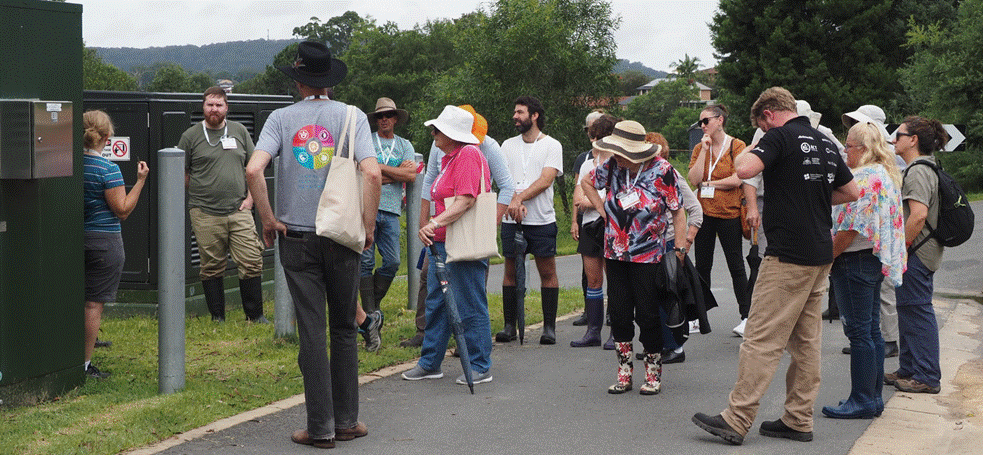
Join village members for our third Ecovillage Experience weekend.
Early Bird prices until February 28th: Book now to save on all levels of accommodation!
- When: Friday April 21- Sun 23
- Where: Narara Ecovillage
- Cost: Varies depending on accommodation – from camping up to 4 star eco-homes
- Register and more info about the fabulous activities lined up here

Some impressions from earlier Ecovillage Experience Weekends:
- Learning something from everyone I spoke to – sustainable house tours – hearing other people’s thoughts on a more thoughtful way of living
- Organised. Happy. Inventive. Joined together based on shared principles. Healthy. Making positive change
- Great dinner and social gatherings
- Picking my own salad to bring back
- I can’t wait to come back for further activities
- Being with like-minded people
- Seeking better alternatives together
- Chatting to villagers about their village experiences
- Seeing the village working together to organise the weekend
- Loved the community engagement – it is a wonderful place with wonderful people.
- Loved community garden working bee, sustainable home tours, forest foraging
- Engaging. Community centric. Around a refreshing set of ethos, values and principles. Centred around sustainability, nature and sociocracy.
- GEN Foraging.
- Climbing in the beautiful playground.
Any time: Passive House & Envirotecture podcast!
With Sustainable House Day coming up in March, our episode of Ecoliving, the NEV podcast with Sydney sustainable design firm Envirotecture may be of interest to you. Andy is also involved in Passivhaus Design & Construct, and joins Adam for a conversation about the Passive House (also known as Passivhaus) concept, how it works, and what it means. (23 minutes).
If you think anyone you know, or any groups you’re connected with, may be interested in this episode, please share it with them!
Listen on:
- Apple Podcasts: Ecoliving on Apple Podcasts
- Google Podcasts: Ecolivng on Google podcasts
- NEV website: Ecoliving Podcast: Passive House & Envirotecture
A general invitation and requests
- If you’ve not visited Narara Ecovillage for a while, come and see how things have changed! We invite you to keep an eye on our events calendar
- More extreme weather globally and thus the need for education. Do you know a presenter who could join us for a talk or deliver a workshop around any environmental awareness, regenerative practices, disaster preparedness, food resilience and community cohesion? Please contact Tanya – learning@nararaecovillage.com
- We invite submissions to our bi-monthly newsletter on the topics of Sustainability & Regeneration.
- Did you know that volunteers are welcome in our village?
- Any questions? Email us at info@nararaecovillage.com
Contact the Network News Editors network.news@neln.org.au
About the Network and the Village

The Network
The Narara Eco Living Network is a not-for-profit educational and outreach body established by members of Narara Ecovillage to foster more sustainable living in all its forms and promote the vision of the village.
We publish the Network News and run networking & educational events and community projects.
Become a supporter of the Network – 12 months membership is only $20 an individual or $40 a family. Networkers are offered discounts to a variety of events at the village, and free entrance to Open Days. Click here to check out upcoming events at the village. The network is 100% run by volunteers so we really appreciate your support!

The Ecovillage
Narara Ecovillage is a community that blends the principles of ecological & social sustainability, good health, business, and caring. We are located on the NSW Central Coast at 33 Gugandi Road, Narara 2250. Click here for more info about Narara Ecovillage

